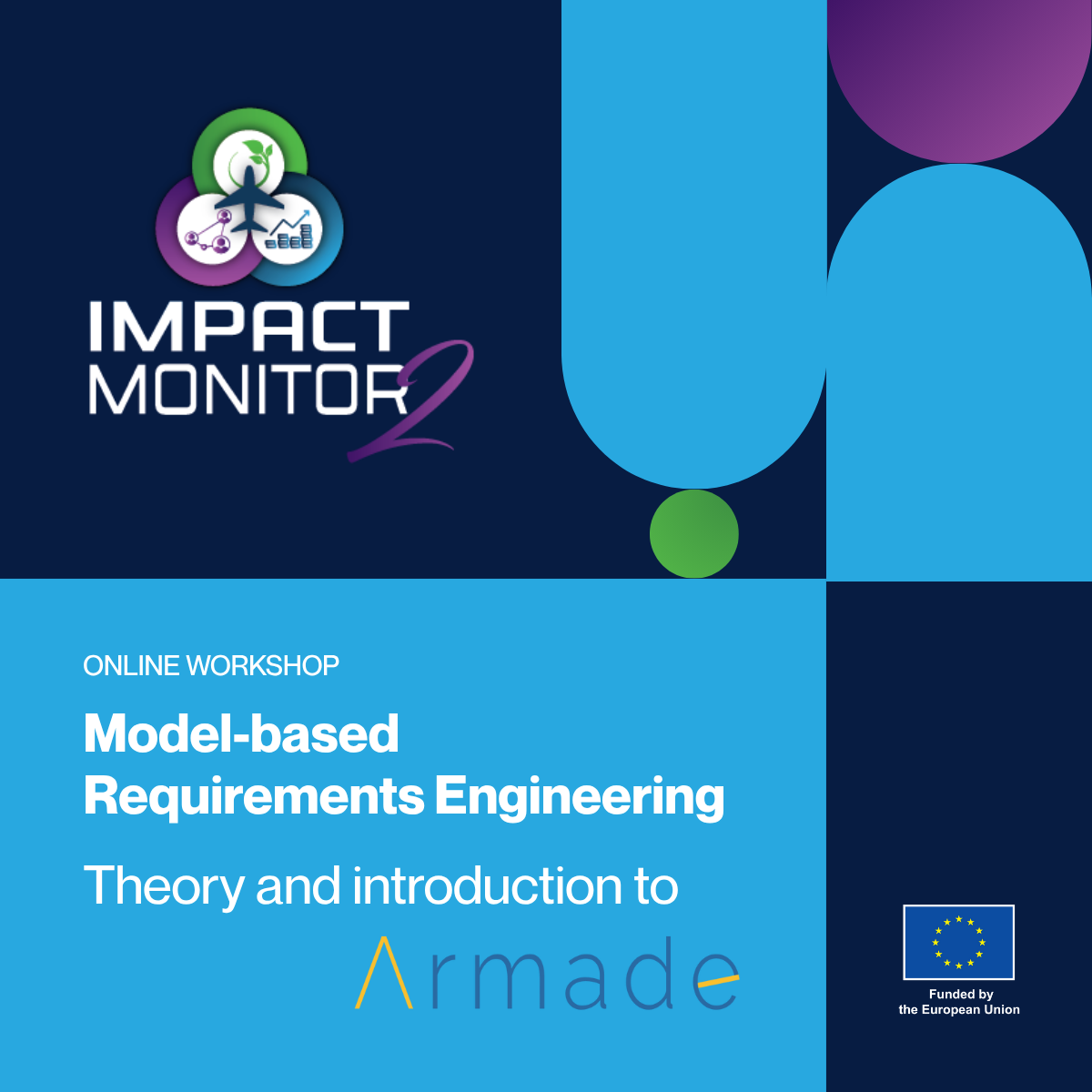Introducing Impact Monitor 2: The driving force of impact assessment of European aviation R&I, that provides forecast analysis to enable informed decision-making
European aviation R&I plays a key role in achieving climate neutrality by 2050 —impacting everything from air quality to energy independence. To support science-based, policy-driven decisions, ImpactMonitor2 steps in as a vital enabler.
Building on its predecessor, Impact Monitor 2 is set to enhance the Toolbox and Framework for assessing the environmental, climate, and competitiveness impacts of aviation R&I. By applying the toolbox and framework to preliminary impact assessments of aviation R&I in Horizon Europe (e.g., from Clean Aviation and SESAR Joint Undertaking 3 initiatives), Impact Monitor 2 is expected to assist Europe in staying at the forefront of innovation and industrial leadership.
Key features of Impact Monitor 2:
- Builds on and improves an established European reference impact assessment toolbox & framework (Impact Monitor Project HORIZON-CL5-2022-D5-01-14)
- Incorporates science based , validated models with traceable methodology
- Expands assessment scope beyond CO₂ emissions to include non CO₂ emissions, climate sensitive regions, and interdependencies
(e.g., airport noise) - Integrates existing EU toolboxes from previous R&I programs (e.g., TEAM Play, Clean Sky 2 Technology Evaluator)
- Allows adjustable fidelity levels for aircraft technologies and air transport system assessments
- Ensures compatibility with Clean Aviation and SESAR 3 partnerships for seamless data exchange
Workshop on Model-Based Requirements Engineering: Theory and Introduction to ARMADE
As part of Impact Monitor 2, the DLR Institute of System Architectures in Aeronautics held a dedicated online workshop on Model-Based Requirements Engineering, including the demonstration of ARMADE's functionalities—a model-based systems engineering (MBSE) environment developed by the German Aerospace Center (DLR).
Why is it relevant? Because in aviation R&I impact assessment, it all starts with stakeholder needs. Needs become Requirements > Requirements drive the design of Systems > Systems are operated and assessed in different scenarios, using indicators like CO₂ emissions, noise, and cost, all linked to the original stakeholder expectations.
Project partners have already started using ARMADE to define requirements for the Impact Assessment Studies, as well as requirements for the Framework, Data Model, and Dashboard. The mapping of stakeholder needs and associated requirements has also begun and is expected to conclude in July.

Stay tuned for the next workshop on "Trade-Space Exploration" and its implementation within the Impact Monitor 2 Framework.
Join our journey on LinkedIn as we work towards a more sustainable and evidence-based aviation future!

Funded by the European Union. Views and opinions expressed are however those of the author(s) only and not necessarily reflect those of the European Union or CINEA. Neither the European Union nor CINEA can be held responsible for them.
